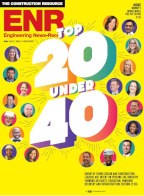"Quality control every step of the way is extremely important," Khoshnevis says. "Scrapping and starting anew is too costly, and failure is not allowed."
His work is supported by about $1 million annually, Khoshnevis says. He has six PhDs and several master's candidates as well as consultants working on the project. There are more than 20 patents so far, "seven of them significant ones." Work continues on developing the hardware, software, materials and concepts.
"Serious challenges include materials delivery for precise extrusion," Khoshnevis says. Delivery is "not easy" with a material such as concrete, which has a lot of abrasive aggregates. Any printing mechanism that handles concrete is going to be destroyed. "But we've managed to create a mechanism to survive concrete," he says.
NASA needs to develop the technology to build landing pads, blast shelters, hangars and roads on the dust-smothered surfaces of Mars and the Moon. Landers that descend to the Moon already have struggled with the blinding clouds of dust driven up by their jets. "The last lander that they put on the Moon almost tipped over," Khoshnevis says. It came to rest with one leg hanging over the edge of a crater, causing it to suddenly list 11º when the jets stopped firing.
Expanding Availability
Back on Earth, the current use of 3D printed models is surging, driven by competition to win bids, secure decisions and solve constructibility problems. The printers are popping up in the offices of engineers, architects and contractors, as well as at retail outlets such as Staples and traditional reprographic houses such as NRI, which has a chain of shops across the U.S.
HDR, lead designer for Tappan Zee Constructors—a JV comprising Fluor Enterprises Inc., American Bridge Co., Granite Construction Northeast Inc. and Traylor Bros. Inc.—turned to an NRI shop in New York City last summer for two very large models of its RFP response for a design to replace New York's Tappan Zee bridge. HDR credits the model with helping the team stand out and win the $3.9-billion job.
"I think it was instrumental," says Robert Allen, HDR production design manager. "It helped us present our vision and have people point at it and sense it, instead of having a PowerPoint movie on a screen.
"Ten years ago, we wouldn't have submitted a model. This project was in a pretty condensed time frame. But I think we produced both models within a month." He said the two models cost about $30,000. "Cost- and schedule-wise, it was a no-brainer to us."
Twelve ft long by 5 ft wide, one high-resolution model put the bridge in the context of the area, down to individual houses along both banks of the Hudson River, on a site three miles across. The second, standard-resolution model was 8 ft long by 3 ft wide and focused on the tower sections of the span.











